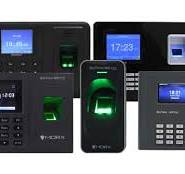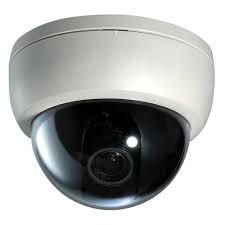In today’s fast-paced business environment, keeping track of employee attendance and working hours is crucial for efficient operations and payroll management. This is where a reliable time attendance system plays a vital role in simplifying the process and ensuring accuracy.
A time attendance system automates the task of recording employee work hours, breaks, overtime, and leaves. By using biometric technology such as fingerprint scanning or facial recognition, employees can easily clock in and out without the need for manual time cards or registers.
One of the key benefits of a time attendance system is its ability to eliminate buddy punching—a common practice where employees clock in on behalf of absent colleagues. With biometric verification, each employee’s unique biological traits serve as their identity, making it nearly impossible for fraudulent timekeeping.
Moreover, a time attendance system provides real-time data on employee attendance, allowing managers to monitor workforce productivity and identify any patterns of absenteeism or tardiness. This data can be used to generate accurate payroll reports, calculate overtime hours, and streamline HR processes.
By implementing a robust time attendance system, organizations can improve overall efficiency, reduce administrative workload, and enhance workplace transparency. It not only saves time and resources but also promotes accountability among employees by ensuring that they are compensated fairly for their work hours.
In conclusion, investing in a modern time attendance system is essential for any business looking to optimize workforce management practices and maintain compliance with labor regulations. With its advanced features and user-friendly interface, a reliable time attendance system is indeed a valuable asset for enhancing operational efficiency and fostering a productive work environment.
9 Advantages of Implementing a Time Attendance System for Enhanced Efficiency and Accuracy
- Automates the process of recording employee work hours.
- Eliminates manual timekeeping errors and inaccuracies.
- Prevents buddy punching through biometric verification.
- Provides real-time data on employee attendance.
- Facilitates efficient payroll management and calculation of overtime.
- Enhances workplace transparency and accountability.
- Streamlines HR processes by generating accurate reports.
- Improves workforce productivity by monitoring attendance patterns.
- Saves time and resources for both employees and managers.
Challenges of Implementing a Time Attendance System: Costs, Technical Issues, Privacy Concerns, Training, and Maintenance
- Initial setup costs can be high, especially for advanced biometric systems.
- Technical issues such as system malfunctions or connectivity problems may disrupt employee time tracking.
- Employees may feel uncomfortable with the invasive nature of biometric data collection for attendance purposes.
- Training employees to use the new time attendance system effectively can take time and resources.
- Maintenance and software updates for the time attendance system may incur additional costs over time.
Automates the process of recording employee work hours.
Automating the process of recording employee work hours is a significant advantage of implementing a time attendance system in any organization. By eliminating manual timekeeping methods, such as paper timesheets or punch cards, the system streamlines the entire attendance tracking process. Employees can easily clock in and out using biometric verification or electronic devices, ensuring accurate and reliable data capture. This automation not only saves time for both employees and HR personnel but also reduces the risk of errors or discrepancies in recording work hours, leading to improved efficiency and payroll accuracy.
Eliminates manual timekeeping errors and inaccuracies.
One significant advantage of a time attendance system is its ability to eliminate manual timekeeping errors and inaccuracies. By automating the process of recording employee work hours and breaks, the system ensures precise and reliable data collection. This not only reduces the risk of human errors associated with manual time tracking but also enhances the overall accuracy of payroll calculations and attendance records. With a time attendance system in place, organizations can rely on consistent and error-free data, leading to improved efficiency in workforce management and streamlined HR operations.
Prevents buddy punching through biometric verification.
The use of biometric verification in time attendance systems effectively prevents buddy punching, a common issue in manual timekeeping processes. By requiring employees to clock in and out using their unique biological traits such as fingerprints or facial recognition, the system ensures that only the authorized individual can record their attendance. This feature not only enhances accuracy in tracking work hours but also eliminates fraudulent practices, promoting a fair and transparent work environment where each employee’s attendance is verified securely and reliably.
Provides real-time data on employee attendance.
The ability of a time attendance system to provide real-time data on employee attendance is a significant advantage for organizations seeking to enhance workforce management efficiency. By offering instant access to up-to-date information on employee clock-ins, outs, breaks, and absences, this feature enables managers to make informed decisions promptly. Real-time data empowers supervisors to address attendance issues promptly, identify trends, and take proactive measures to ensure optimal workforce productivity. Moreover, having immediate access to accurate attendance information facilitates timely payroll processing and minimizes errors in calculating work hours, ultimately contributing to smoother HR operations and improved overall organizational performance.
Facilitates efficient payroll management and calculation of overtime.
A significant advantage of a time attendance system is its ability to facilitate efficient payroll management and accurate calculation of overtime. By automatically recording employee work hours, breaks, and absences, the system streamlines the payroll process by providing real-time data for payroll calculations. This not only saves time and reduces manual errors but also ensures that employees are compensated correctly for their overtime hours, thus promoting fair and transparent payroll practices within the organization.
Enhances workplace transparency and accountability.
The implementation of a time attendance system significantly enhances workplace transparency and accountability by providing accurate and real-time data on employee attendance. With clear records of clock-in and clock-out times, breaks, and leaves, both employees and management can easily track working hours and ensure compliance with company policies. This transparency fosters a culture of accountability where employees are encouraged to take ownership of their time management, leading to improved productivity and efficiency across the organization.
Streamlines HR processes by generating accurate reports.
Streamlining HR processes by generating accurate reports is a significant advantage of implementing a time attendance system in the workplace. By automatically tracking employee work hours and attendance data, the system can quickly compile comprehensive reports that provide valuable insights for HR personnel. These accurate reports not only save time on manual data entry but also ensure precision in payroll calculations, leave management, and performance evaluations. With real-time access to up-to-date information, HR teams can make informed decisions, identify trends, and address any attendance-related issues promptly, contributing to overall organizational efficiency and compliance.
Improves workforce productivity by monitoring attendance patterns.
Monitoring attendance patterns through a time attendance system is a valuable pro that significantly contributes to enhancing workforce productivity. By tracking when employees clock in and out, managers can identify trends and patterns in attendance behavior. This insight allows them to address any recurring issues promptly, such as frequent tardiness or unauthorized absences, leading to improved overall productivity. Additionally, by having a clear overview of employee attendance, managers can better allocate resources and adjust schedules to ensure optimal staffing levels, ultimately maximizing efficiency and output in the workplace.
Saves time and resources for both employees and managers.
One significant advantage of a time attendance system is its ability to save time and resources for both employees and managers. By automating the process of recording work hours and attendance, employees no longer have to spend time manually filling out timesheets or clocking in and out using traditional methods. This streamlined approach allows employees to focus more on their tasks and responsibilities, leading to increased productivity. For managers, the system eliminates the need for manual data entry, reducing administrative tasks and ensuring accurate payroll processing. Overall, the time attendance system efficiently allocates resources and simplifies time-tracking processes for improved efficiency in the workplace.
Initial setup costs can be high, especially for advanced biometric systems.
One significant drawback of implementing a time attendance system is the high initial setup costs, particularly when opting for advanced biometric systems. The investment required for installing and configuring sophisticated biometric technologies such as fingerprint scanners or facial recognition devices can be substantial, posing a financial challenge for some organizations, especially small businesses or startups with limited budgets. These upfront expenses may deter companies from adopting modern time attendance solutions despite their long-term benefits, leading to potential delays in upgrading to more efficient and secure attendance tracking methods.
Technical issues such as system malfunctions or connectivity problems may disrupt employee time tracking.
One significant drawback of time attendance systems is the susceptibility to technical issues, such as system malfunctions or connectivity problems, which have the potential to disrupt employee time tracking. When these issues occur, employees may face challenges in accurately recording their work hours, leading to discrepancies in attendance records and potential disputes over payment. Moreover, system downtime resulting from technical glitches can cause delays in payroll processing and hinder overall productivity within the organization. Addressing and resolving these technical issues promptly is crucial to ensure the seamless operation of a time attendance system and maintain reliable employee time tracking.
Employees may feel uncomfortable with the invasive nature of biometric data collection for attendance purposes.
One significant drawback of implementing a time attendance system that relies on biometric data collection is the potential invasion of employee privacy and the discomfort it may cause. Some employees may feel uneasy about having their biometric information, such as fingerprints or facial features, stored and used for attendance tracking purposes. The invasive nature of biometric data collection can raise concerns about data security, misuse of personal information, and the risk of identity theft. This discomfort among employees can lead to resistance towards adopting the system and may create a sense of distrust within the workplace.
Training employees to use the new time attendance system effectively can take time and resources.
Training employees to use a new time attendance system effectively can be a significant challenge that requires time and resources. Implementing a new system may involve educating staff on how to clock in and out, request leaves, or navigate the system’s interface. This training process can disrupt daily operations and productivity as employees adjust to the new procedures. Additionally, allocating resources for training sessions and support materials adds to the overall cost of implementing the time attendance system. Ensuring that all employees are proficient in using the system may require ongoing training and support, further consuming valuable time and organizational resources.
Maintenance and software updates for the time attendance system may incur additional costs over time.
One significant drawback of using a time attendance system is the potential for ongoing costs associated with maintenance and software updates. While the initial investment may cover the purchase and installation of the system, businesses must consider the long-term expenses involved in keeping the system up-to-date and functioning optimally. Maintenance tasks such as hardware repairs, software upgrades, and troubleshooting issues can incur additional costs over time, impacting the overall budget allocated for workforce management solutions. Moreover, software updates are essential to address security vulnerabilities, ensure compatibility with new technologies, and enhance system performance, making it necessary to allocate resources for regular updates to maintain the system’s efficiency and reliability.


